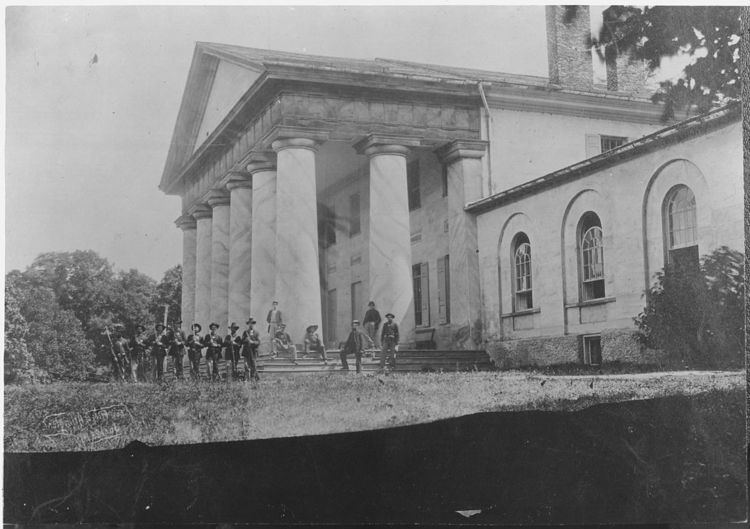Nationality American Died February 4, 1890 Name Douglas Syphax | Known for Civil War Sergeant Occupation Landowner | |
 | ||
Born 1842 | ||
Douglas Syphax (1842 - 4 February 1890) or Douglass Syphax was a member of the African-American aristocracy, from a wealthy land-owning family. He was a descendant of Martha Washington and one of the few black sergeants to serve in the American Civil War.
Contents
Background
Douglas Syphax was a member of an illustrious Virginia clan who owned land in Arlington County, Virginia that later became part of Arlington National Cemetery. The family was descended from Martha Washington (1731–1802), wife of President George Washington (1732–1799). The family, considered aristocratic in African-American society, traces its origins to Mariah (with an "h") Custis, the mulatto daughter of George Washington Parke Custis (1781–1857), grandson of Martha Washington. Mariah's mother was Ariana Carter, one of Custis's house slaves.
When Mariah Custis asked her father for permission to marry Charles Syphax, one of his slaves, he freed them both, held a wedding for them in his Arlington mansion, and gave them fifteen acres of his Arlington estate. Mary Custis (1808–1873), Mariah's white half-sister, was to marry the Confederate General Robert E. Lee (1807–1870). Mariah and Charles had ten children, several of whom were given important political positions from the 1850s onward. Their eldest son, William B. Syphax, was eventually appointed superintendent of Washington's black segregated school district.
Life
Douglas Syphax was born in Arlington, Alexandria, Virginia in 1842. Douglas' parents were Charles Syphax, (who was the son of Mariah (with an "h") Custis Syphax) and Eliza. In 1864 he entered the Union Army, serving for ten months before being honorably discharged. Douglas Syphax married Abbie McKee, daughter of the wealthy businessman Colonel John McKee. Colonel McKee had come to Philadelphia from Virginia in the 1840s, become a waiter and then the owner of restaurants before moving into real estate and reputedly becoming a very wealthy man.
In the late 1800s Syphax was involved in speculative real-estate, employing the African American architect Calvin Brent to design houses for him. He was a member of the Oliver P. Morton Post of the Grand Army of the Republic. Syphax was appointed to Post 3 in the Relief Committee of the Grand Army's Department of the Potomac, which was active from February 1888 to August 1889 and decided which Civil War veterans should be eligible for relief. He died on 4 February 1890. His wife, Abbie, lived on until 19 February 1923. They were buried in Arlington National Cemetery.
Children
When Colonel McKee died, he left Abbie Syphax a legacy of just $300, and $50 for each of her children. Her nephew Henry McKee Minton, later to become a prominent physician, was also given $50, with most of the rest going to the Roman Catholic Church to fund a college for orphans. The will was disputed, and Abbie eventually gained $26,500 from Colonel McKee's will. When she remarried in 1904 she was reported to be "the richest colored woman in this city, and perhaps in the world."
Douglas and Abbie had five children. Their son, Ernest Syphax, was a pharmacist in Pittsburgh. Carrie Syphas Watson was the first Black directress of domestic art in the Public Schools of the District of Columbia. Mary E. Syphax and Julia Syphax Willis were public school teachers. Another son was Theophilus John Minton Syphax, a classmate and friend of the future educator Roscoe Conkling Bruce at Phillips Exeter Academy in New Hampshire. Theophilus had a light complexion. He changed his name to T. John McKee and let people think that he was white. He cut off relations with his family and married a white woman with whom he had two children. In the 1940s, however, after all his siblings and first cousins had died, he sued for a portion of his grandfather McKee's estate that had not been distributed.
